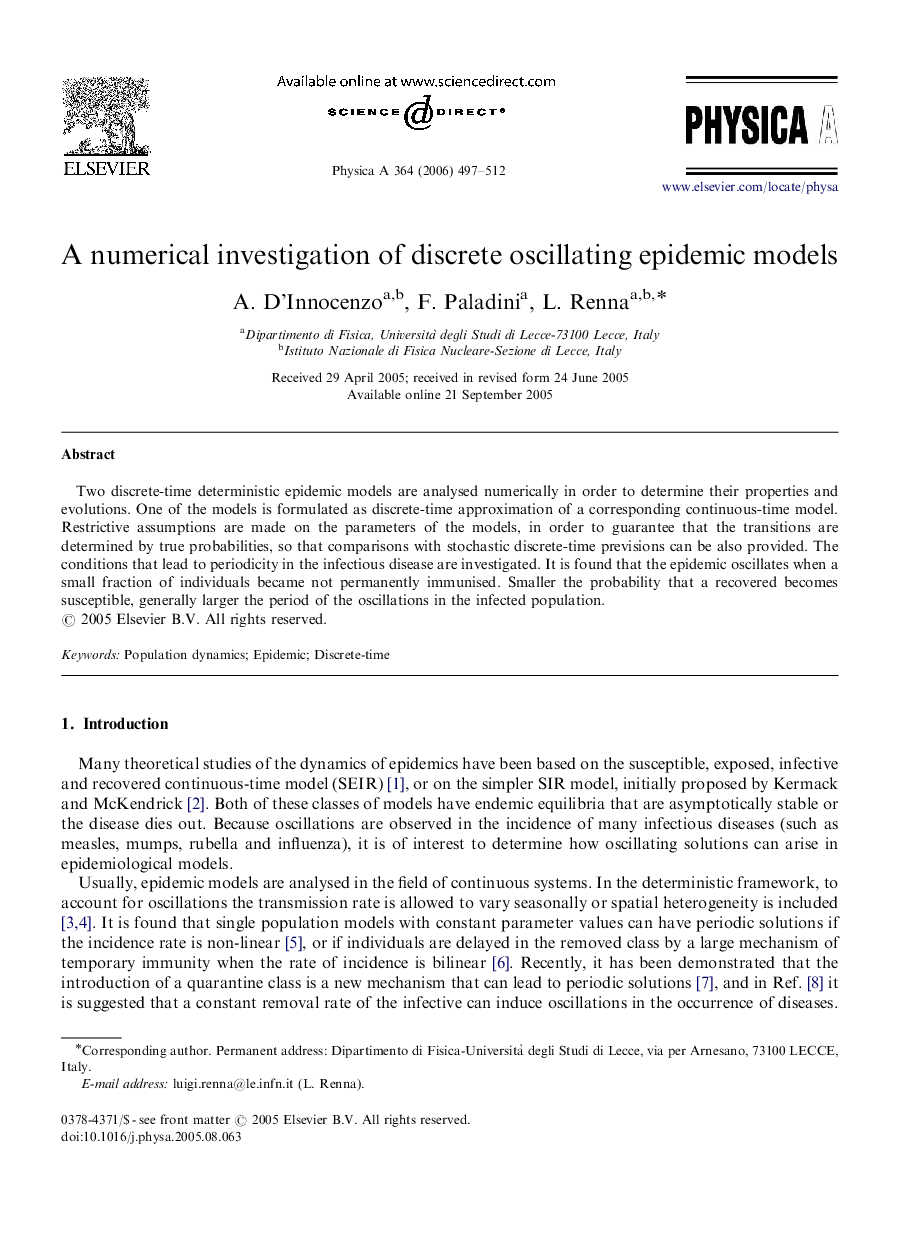| Article ID | Journal | Published Year | Pages | File Type |
|---|---|---|---|---|
| 977538 | Physica A: Statistical Mechanics and its Applications | 2006 | 16 Pages |
Abstract
Two discrete-time deterministic epidemic models are analysed numerically in order to determine their properties and evolutions. One of the models is formulated as discrete-time approximation of a corresponding continuous-time model. Restrictive assumptions are made on the parameters of the models, in order to guarantee that the transitions are determined by true probabilities, so that comparisons with stochastic discrete-time previsions can be also provided. The conditions that lead to periodicity in the infectious disease are investigated. It is found that the epidemic oscillates when a small fraction of individuals became not permanently immunised. Smaller the probability that a recovered becomes susceptible, generally larger the period of the oscillations in the infected population.
Related Topics
Physical Sciences and Engineering
Mathematics
Mathematical Physics
Authors
A. D'Innocenzo, F. Paladini, L. Renna,
